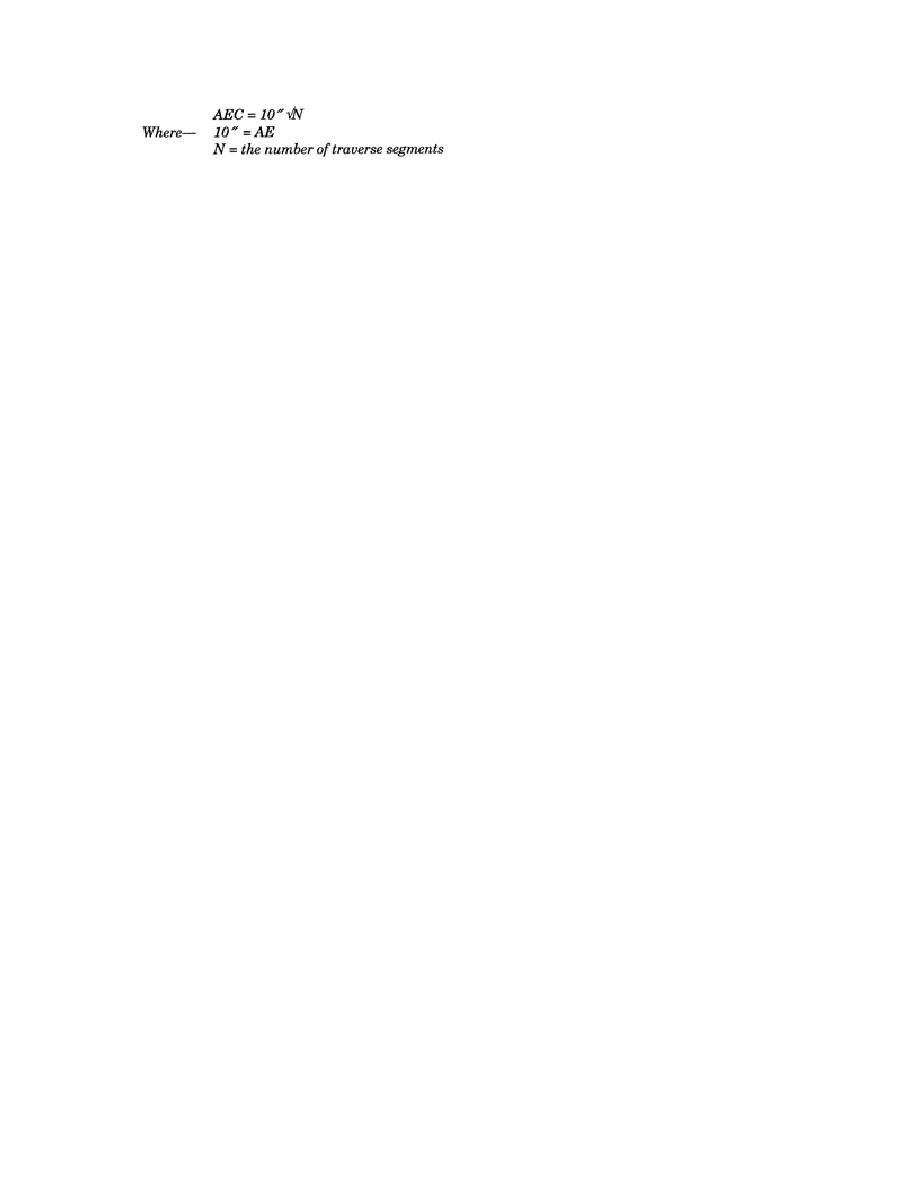
If the azimuth error does not fall within the AEC, surveyors must reobserve the station angles of the
traverse in the field.
o. Azimuth Corrections. Before determining a correction, surveyors compute the actual azimuth
error. The azimuth error is obtained by subtracting the computed closing azimuth from the known
closing azimuth. This difference provides the angular error with the appropriate sign. By reversing this
sign, the azimuth correction (with the appropriate sign) is obtained. If the azimuth correction falls
within allowable limits, surveyors may compute the error and the correction.
(1) Traverse adjustment is based on the assumption that errors have accumulated gradually and
systematically throughout the traverse. The azimuth correction is applied accordingly. The correction is
distributed systematically among the angles of the traverse.
(2) After the angles are adjusted, surveyors compute the adjusted azimuth of each leg by using
the starting azimuth and the adjusted angles at each traverse station. Surveyors should compute the
adjusted azimuth throughout the entire traverse and check against the correct azimuth to the closing
azimuth mark before beginning any further traverse computations.
p. Azimuth-Bearing Angle Relationship. The trigonometric functions (sine, cosine, tangent, and so
on) of the azimuth and the bearing are numerically the same. Surveyors may use either the azimuth or
the bearing to compute the traverse. The choice depends upon the computer and the available
equipment.
q. Azimuth and Bearing. If a calculator with angular functions is available, the use of the azimuth
is easier since it eliminates the need to compute the bearing. If the functions must be determined from
tables, it is necessary to first compute the bearing angles since the tabulation of functions is normally
published for angles of 0, to 90,. The bearing of a line is the acute angle (less than 90) formed by the
line in question and the north-south line through the occupied point. This illustrates the relationship
between the azimuth of a line and its bearing.
r. Quadrants. The manner for computing bearing angles from a given azimuth depends on the
quadrant in which the azimuth lies. When the azimuth is in the first quadrant (0, to 90,), the bearing is
equal to the azimuth. When the azimuth is in the second quadrant (90, to 180,), the bearing is equal to
180, minus the azimuth. When the azimuth is in the third quadrant (180, to 270,), the bearing is equal
to the azimuth, minus 180,. When the azimuth is in the fourth quadrant (270, to 360,), the bearing is
equal to 360, minus the azimuth. Since the numerical values of the bearings repeat in each quadrant,
surveyors must label them and indicate into which quadrant they fall. The label must indicate whether
the bearing angle is measured from the north or south line and whether it is east or west of that line. For
3-31
EN0593



 Previous Page
Previous Page
